Install the brake disc (A) and tighten the screw (B).
Tightening torque : N.m (kgf.m, lb-ft)
4.9~5.9 (0.5~0.6, 3.6~4.3)
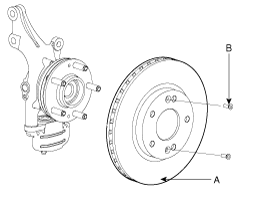
Install the brake disc (A) and tighten the screw (B).
Tightening torque : N.m (kgf.m, lb-ft)
4.9~5.9 (0.5~0.6, 3.6~4.3)

Install the caliper carrier (B) and tighten the caliper mounting bolts (A).
Tightening torque : N.m (kgf.m, lb-ft)
78.5~98.1 (8.0~10.0, 57.9~72.3)
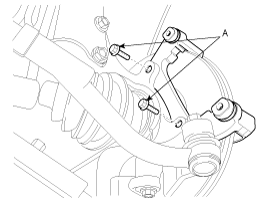
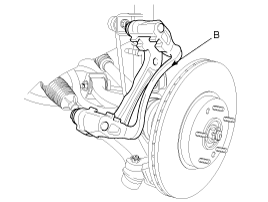
Install the pad springs (D) to the caliper carrier (A).
Install the brake pads (B) and pad shims (C) on the pad springs correctly. Install the pad with the wear indicator on the inside. If you are reusing the pads, always reinstall the brake pads in their original positions to prevent a momentary loss of braking efficiency.
Check the foreign material at the pad shims (A) and the back of the pads (B).
Contaminated brake discs or pads reduce stopping ability. Keep grease off the discs and pads.
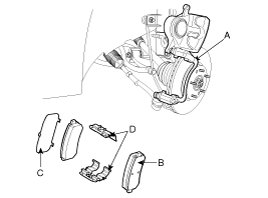
Push in the piston using the SST(09581-11000) so that the caliper will fit over the pads. Make sure that the piston boot is in position to prevent damaging it when installing the caliper.
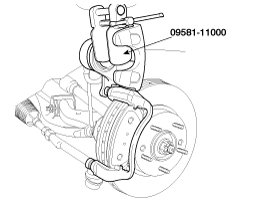
Install the caliper assembly(A).
Be careful not to damage the piston pin boot.
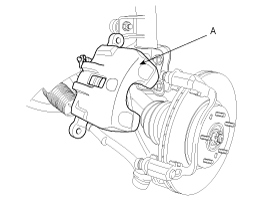
Install the brake hose bolt (B) and the guide rod bolts (C) to the caliper assembly (A).
Tightening torque : N.m (kgf.m, lb-ft)
Bolt (B) : 24.5~29.4 (2.5~3.0, 18.1~21.7)
Bolt (C) : 21.6~31.4 (2.2~3.2, 15.9~23.1)
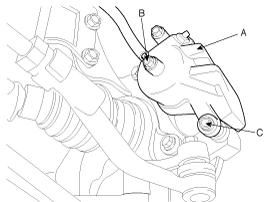
Refill the master cylinder reservoir to the MAX line.
Bleed the brake system. (Refer to "Bleeding of brake system")
Depress the brake pedal several times to make sure the brakes work, then test-drive.
Engagement of the brake may require a greater pedal stroke immediately after the brake pads have been replaced as a set. Several applications of the brake will restore the normal pedal stroke.
After installation, check for leaks at hose and line joints or connections, and retighten if necessary.